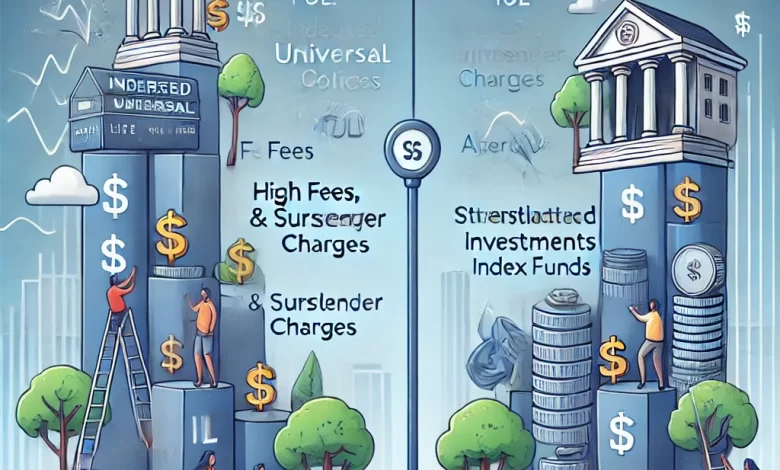Why IUL Is a Bad Investment

See Article Content
Why IUL Is a Bad Investment
Indexed Universal Life Insurance (IUL) is often marketed as a flexible and lucrative financial product, combining life insurance with an investment component. While it may seem like an appealing choice at first glance, many financial experts argue that it may not be the best investment for most people. Let’s explore why IUL might be a bad investment and what you should consider before committing.
What Is an IUL?
IUL is a type of permanent life insurance that allows policyholders to allocate a portion of their premium payments to a cash-value account. This account earns interest based on the performance of an underlying stock market index, such as the S&P 500. Unlike directly investing in the market, IUL policies typically have caps and participation rates that limit returns.
Reasons Why IUL Is a Bad Investment
1. High Fees and Costs
One of the biggest drawbacks of IUL policies is the high fees embedded in them. These include:
- Administrative Fees: Charged for managing the policy.
- Mortality Charges: The cost of maintaining the life insurance coverage.
- Surrender Charges: Significant penalties for withdrawing funds early.
These fees can eat into your returns, making it difficult to build wealth effectively.
2. Limited Growth Potential
While IUL policies offer the potential for market-linked growth, they also come with caps and participation rates:
- Caps: These limit the maximum return you can earn in a given year. For example, if the market gains 10% but your policy has a 6% cap, your return will be limited to 6%.
- Participation Rates: Often, you’ll only earn a percentage of the market’s gains (e.g., 80%).
These limitations significantly reduce the growth potential compared to investing directly in the stock market.
3. Complexity and Lack of Transparency
IUL policies are notoriously complex and difficult to understand. Many policyholders are unaware of the fine print, including how fees are structured or how interest is credited. This lack of transparency can lead to unrealistic expectations and disappointment.
4. Risk of Policy Lapse
If you fail to make sufficient premium payments or the returns on the investment component are lower than expected, the policy can lapse. This means you could lose both your life insurance coverage and the cash value you’ve accumulated.
5. Better Alternatives Exist
For most people, there are more straightforward and cost-effective ways to achieve their financial goals:
- Term Life Insurance: Provides affordable coverage without an investment component.
- Index Funds or ETFs: Offer low-cost access to market growth with no caps or participation limits.
- Roth IRA or 401(k): Provide tax advantages and greater flexibility for retirement savings.
Who Might Benefit from an IUL?
While IUL is not ideal for most investors, it may work for individuals with:
- High net worth seeking additional tax-deferred growth.
- A specific need for permanent life insurance combined with investment.
However, even in these cases, it’s crucial to consult with a financial advisor to weigh the pros and cons.
Conclusion
IUL policies may sound appealing with their promise of market-linked returns and insurance coverage, but their high fees, complexity, and limited growth potential often outweigh the benefits. For most individuals, investing in simpler and more transparent financial products, like index funds or term life insurance, is a smarter choice. Before committing to an IUL, make sure to thoroughly understand the terms and explore alternative options.
Q&A: Frequently Asked Questions
What is an IUL policy?
Why are IUL policies expensive?
Are there better alternatives to IUL?
Who might benefit from an IUL?
Found this article interesting? We’re certain the next one will intrigue you even further. Is Candy a Capital Good? Understanding the Difference Between Capital and Consumer Goods






